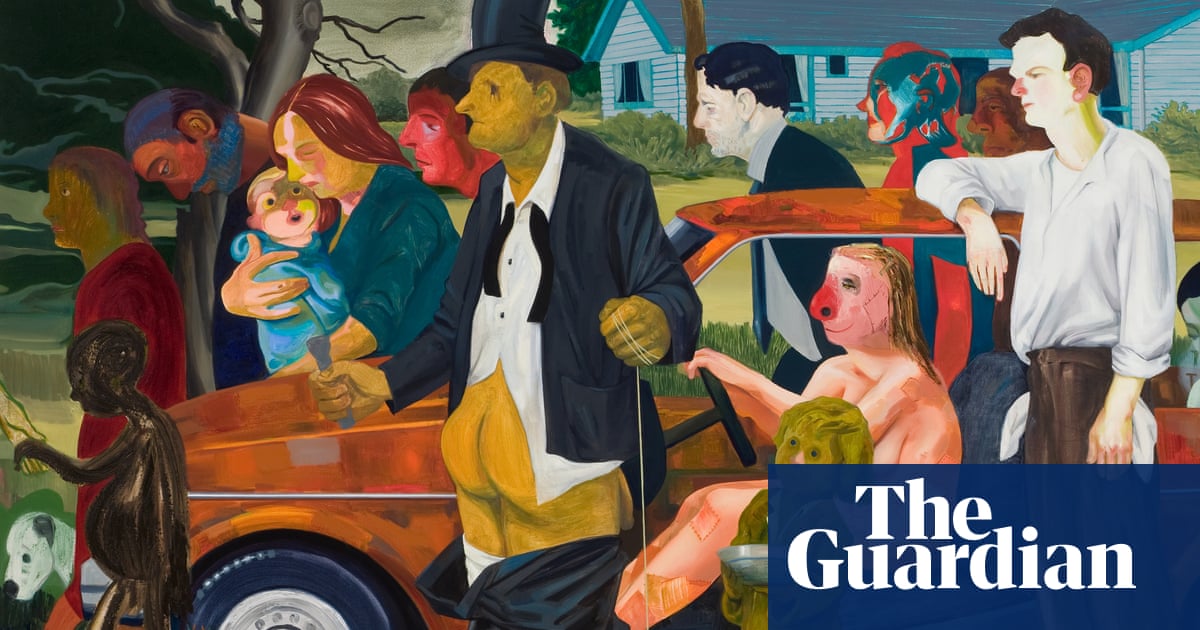
Comment on the delightfully absurd spectacle of the Met Gala this year coalesced around the pointed image of Alexandria Ocasio-Cortez in a gorgeously traditional white gown, the kind of thing a deep south debutante might wear, with “Tax the Rich” in a vast red scrawl on the rear. Was the Aurora James dress provocative or performative, just facile radical cosplay? Critics across the political spectrum worked themselves into a froth of outrage: it was hypocrisy to even attend the $35,000-a-ticket event; AOC was having her cake, eating it, then telling the cake it was problematic.
On some level, job done: we’re all talking about it. “The medium is the message,” as she wrote on Instagram afterwards. AOC wasn’t the only one with a message for the scrollers and gawpers on the night: congresswoman Carolyn Maloney’s suffragette-inspired gown was embroidered with “Equal rights for women”; serial sloganeer Cara Delevingne wore a “Peg the Patriarchy” bulletproof vest designed by Dior’s Maria Grazia Chiuri, and if you’re not rolling your eyes reading that, you’re a kinder person than me.
None of this is inherently surprising: political fashion is as old as politics. Female leaders and protesters since antiquity dressed in male clothing and the 18th and 19th centuries swished with sashes, sans-culottes and rosettes. The 20th century saw suffragette colours and the civil rights movement shifting from the deliberate respectability of Sunday Best to the Black Panthers’ leather jackets, shades and berets. Punk adopted slogans and post-punk made them explicitly political: Katherine Hamnett wore her “58% don’t want Pershing” T-shirt to meet Mrs Thatcher in 1984 in protest at US missiles in Europe (“She bent down and read it and let out a squawk like a chicken,” she recalled). Hamnett, Westwood and the ACT UP Aids activists inspired and dressed a generation, even if most of us stuck to CND symbols and Frankie Says Relax. The 90s brought raver protest smileys; the 00s introduced us to silicone slogan wristbands, among other fashions we’d very much like to forget.
But there’s a decent argument that the chaos and upheaval of the past decade, the sense of disenfranchisement and despair at political life, have super-charged statement dressing across the ideological spectrum. Debate seems impossible, so we let our clothes do the talking. We’ve had Maga caps and pink pussy hats, gilets jaunes and Katherine Hamnett exhorting us to Cancel Brexit. It’s black (the Golden Globes #MeToo 2018 initiative or antifascist protest “black bloc” clothing) and white (the Democratic Women’s Working Group at the 2019 State of the Union). It’s binary: Melania’s “I Really Don’t Care. Do U?” parka and Jill Biden’s “Love” jacket retort.
Some political fashion feels spine-tinglingly powerful: NBA players wearing “I can’t breathe” T-shirts in 2014 to protest the killing of Eric Garner; Stormzy on the Pyramid Stage in Glastonbury in a Banksy union jack stab vest. Some become so ubiquitous it is leached of meaning: when Burberry shows a pride rainbow collection as it did in 2018, it’s progress, certainly, but it’s no longer protest.
Much of it inspires an exasperated sigh. Natalie Portman wore a dress embroidered with the names of overlooked female directors when her own production company had only employed one (her). Cara Delevingne’s “Peg the Patriarchy” dress failed to credit the sex educator and artist Luna Matatas who copyrighted the phrase in 2015. And we suffered the grisly spectacle of Nick Clegg in a This is What a Feminist Looks Like T-shirt.
This stuff is most susceptible to accusations of slacktivism: it can feel didactic and pointlessly preachy. A slogan T-shirt that says “Climate change is real” is still contributing to the environmental catastrophe of fast fashion: surely it’s more radical not to buy anything at all. Others can feel disconcertingly sincere; a literal heart on the sleeve.
That can make for an uneasy cohabitation between fashion and statement, too, because we want to look good, even when we’re being political. I bought a “Merci Simone” T-shirt, thanking Simone Veil for her work legalising abortion in France, because I’m truly grateful, but also because it had a scoop neck and a cute font.
But you don’t need to dress in sackcloth to make a political point: that sweet spot where activism and fashion inspire one another can be electric. Show is often more powerful than tell – think of Billy Porter, splendid in his tuxedo ballgown at the 2019 Oscars, the spiritual successor to Marlene Dietrich arriving in Paris in trousers in 1933, with that same elegant defiance. “I felt alive. I felt free. And open and radiant. And beautiful!” Porter said. What could be more radical than that?












